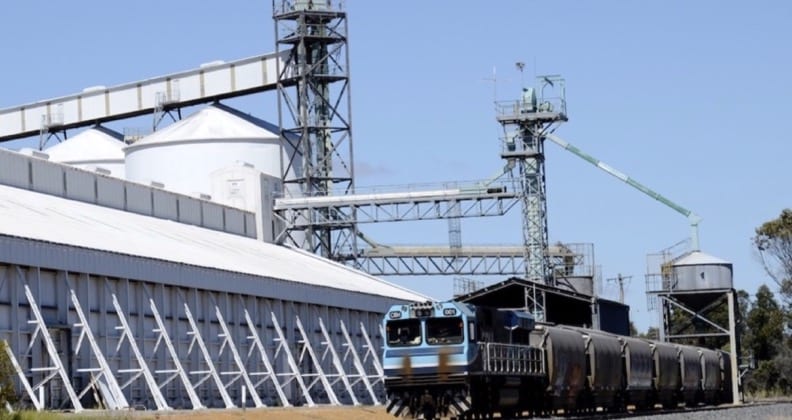Brains + grains = gains: a novel decision-making tool for farmers

Curtin researchers have designed a novel tool for farmers that’s helping simplify the highly complex economics of grain harvesting and distribution.
Every year, more than 4,000 grain growers in Western Australia harvest their wheat, barley, oats, canola and lupins between November and January. The vast majority of their crops are transported from the field to port via a bulk storage and handling network. It’s a very busy time of year with everyone trying to get their harvest into bulk storage at the same time.
To avoid the congestion during harvest, farmers can elect to store grain on-farm. This is widespread in countries such as the US and Canada, but relatively uncommon in Western Australia, with the cost of permanent grain silos a major factor.
Global Grain Handling Solutions is developing a low cost and flexible alternative for on-farm grain storage: sealable tarpaulin ‘teepees’ that can be hired and moved every season.
The portable storage system removes the large up-front capital investment required for permanent silos, but provides the benefits of on-farm storage, for at least a portion of a crop.
It’s an innovation that could alter the economics of harvesting for Western Australian farmers, but choosing the right combination of harvest and distribution pathways to adopt becomes a very complex problem with significant impacts on profit.
With support from the Federal Government through the Department of Industry, Innovation and Science’s Innovation Connections program, Global Grain Handling Solutions commissioned research at Curtin University to develop a rigorous cost/benefit analytical model of on-farm storage facilities.
Mathematical modellers Professor Ryan Loxton and Dr Elham Mardaneh from Curtin’s School of Electrical Engineering, Computing and Mathematical Sciences captured the characteristics of a harvest season and the activities associated with it into a rigorous mathematical model.
Over 60 inputs can be set to match a specific farm’s operations, from the number of hectares under each different crop to the amount and cost of storage available, number of harvesters and trucks, harvesting rates, truck speeds, distances to receival sites with their opening times and requirements, right through to current market prices.
Other variables can be adjusted to consider moisture limits, blending ratios, yield and quality reductions to the standing crop over time, transportation costs and the percentage of harvest split between different distribution pathways and markets.
Programming expertise provided by computational specialist Shiv Meka from the Curtin Institute for Data Science was then crucial in converting the complex mathematical algorithm into a robust modelling tool for farmers.
Loxton explains: “Elham Mardaneh and I code for research publications and other mathematicians – not farmers and the general public! There’s a big difference between a research output and a commercial tool. Shiv created something robust with an approachable user interface. You don’t need a PhD in maths to be able to use it.”
After coding and refining the mathematical model, Meka developed an easily-accessible user interface in Excel, designed specifically for the farming community. Given a farmer-defined set of operating parameters, the model can calculate the expected costs and profits arising from particular harvest choices and conditions.
Grain growers can now use this decision support tool to run ‘what if’ scenarios, evaluate the benefit of using on-farm storage as a flexible adjunct to the fixed distribution network, and help plan their harvest logistics.

“It is definitely aimed at a strategic level as a scenario planner”, says Loxton.
“But we are already thinking about how we can extend the program. For example, once a set of variables has been selected for a farm and a season, an algorithm could be designed to provide day-to-day harvesting optimisation. Or if we fixed some parameters, like the number of harvesters or trucks, we could work out the optimal harvest start date for a given farm.”
As a result of this research collaboration, farmers can now use familiar spreadsheet software to access a rigorous, evidence-based mathematical model to explore their harvest options and identify the most profitable scenarios for their specific farm.
As Global Grain Handling Solutions move to larger-scale trials of their flexible, low-cost on-farm grain storage system, the model is giving farmers more confidence in their forward planning and harvest decisions.



